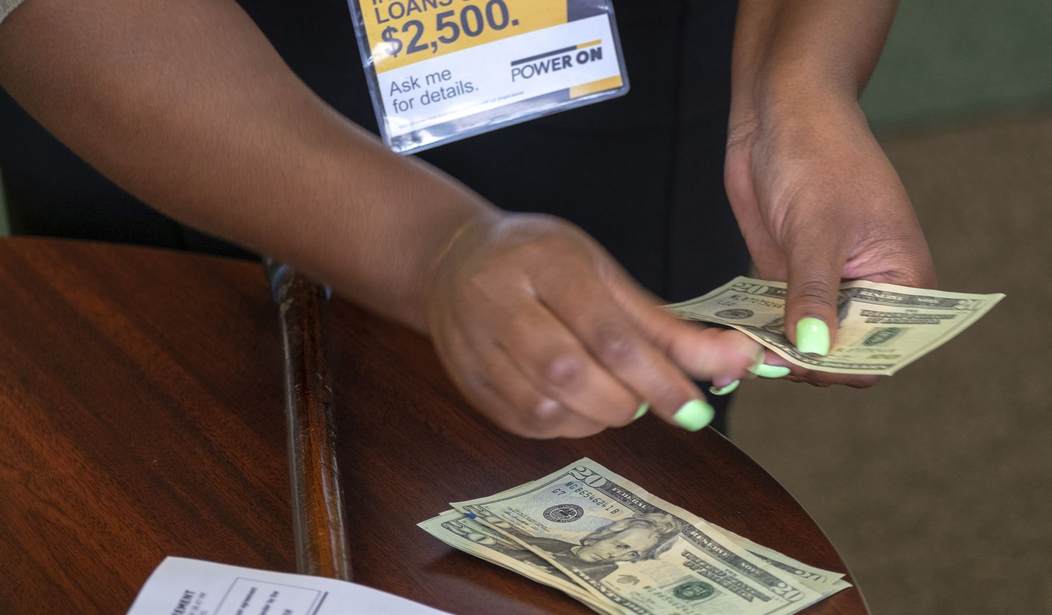Congress is taking aim at short-term loans. The Veterans and Consumers Fair Credit Act (H.R. 5050) would set a federal cap on loan interest rates. The intention is to protect consumers, but capping interest rates would have the opposite effect, doing the most harm to those with the least financial means.
Proponents cite high annual percentage rates (APR) on small-dollar loans to argue that lenders are taking advantage of desperate borrowers. One problem with this argument is that an annual rate is a poor metric by which to judge a loan with a two-week term. For example, the 36 percent APR cap proposed by H.R. 5050 would mean a charge of only $1.38 on a $100 loan over two weeks. That doesn’t come close to covering the fixed cost of running of a business, especially one in an industry so heavily regulated as financial services, nor provide sufficient compensation to justify serving those at highest risk of default.
Whenever politicians pick an arbitrary limitation on market prices, the expected response can be anticipated by first imagining the most extreme limitation. What would happen, in other words, if no interest could be charged for a loan? Quite simply, there would be no lending. A slightly less onerous limitation, such as a 5 percent cap would see some lending but only in large dollar amounts and to the most credit-worthy individuals.
The pattern should be easy to see: the lower the cap, the fewer borrowers that will be served. The corollary is that allowing market prices to work ensures the maximum number is served.
A study by Thomas Durkin and Gregory Elliehausen of the Federal Reserve Board and Min Hwang of George Washington University found that a 36 percent APR cap would require loans of at least $2,600 for lenders to break even. Since lenders aren’t in the business of losing money, this effectively bans loans of less than $2,600 and forces those who need smaller loans to choose from less desirable options.
Recommended
Basically, the proposed cap won’t affect most borrows who are able to secure conventional loans. For those without easy access to credit, however, like the over 8 million households found to be unbanked in a 2017 survey by the Federal Deposit Insurance Corporation, it will mean nowhere to turn other than black market loan sharks or relying on family and friends.
There’s more than just theory telling us to expect this result.
When Chile lowered its rate cap on small, unsecured loans from 56 to 36 percent in 2013, it allowed researchers to study the impact on consumer welfare. J. Cuesta and A. Sepulveda found that 16 percent of borrowers benefited a very small amount, but 82 percent were harmed to a much greater degree through loss of credit access.
Similarly, a study by Carlos Madeira at the Central Bank of Chile found an estimated 9.7 percent of households were excluded from bank credit, with the strongest impact on the youngest, least educated and poorest families. Many other studies report similar findings.
Politicians often make the mistake of assuming that poor people necessarily make bad financial decisions. Instead, more often than not, they are simply choosing the least bad option available. The way to improve their situation is not to take away that option, no matter how unsavory it may seem to those privileged with better alternatives, but to find ways to expand the range of choices available to the poor.
In the financial industry, that might mean revisiting government regulations that make the cost of doing business excessively high. Unfortunately, that’s not as politically easy as singling out one industry as the bad guy and promising to protect consumers from their unsavory ways. The poor don’t need that kind of “protection” from their own choices, especially when it will leave them unquestionably worse off.

























Join the conversation as a VIP Member